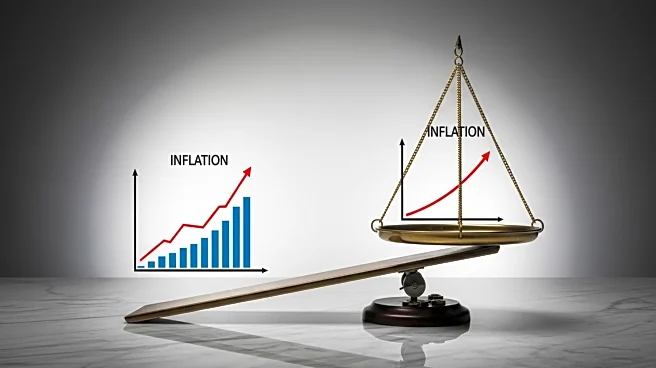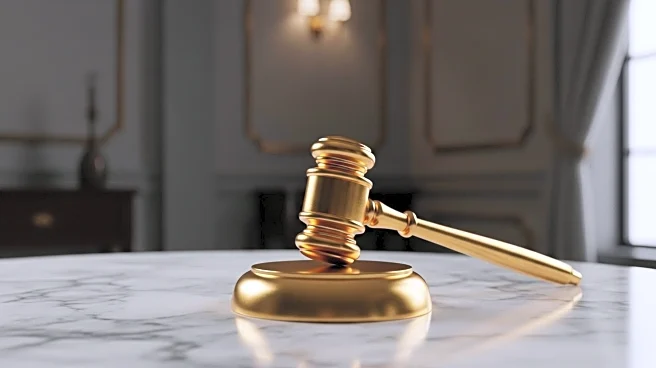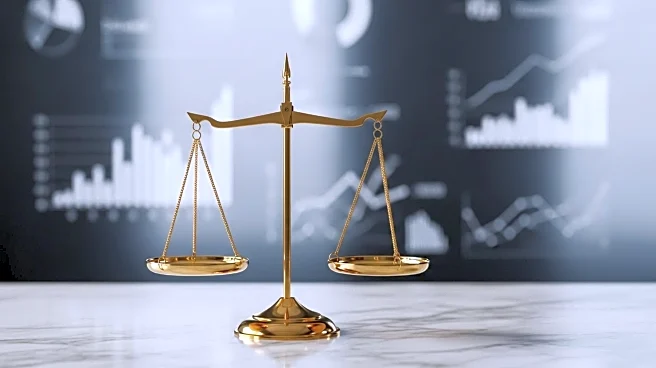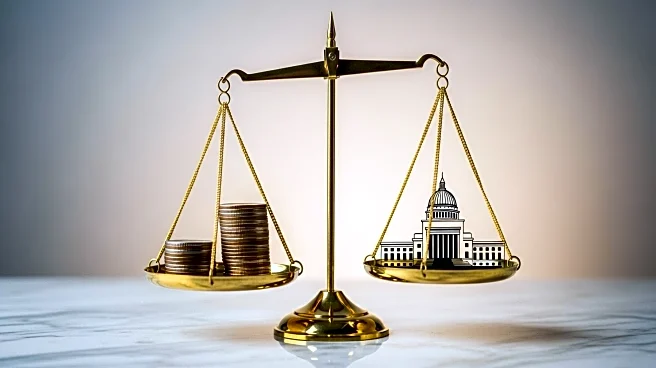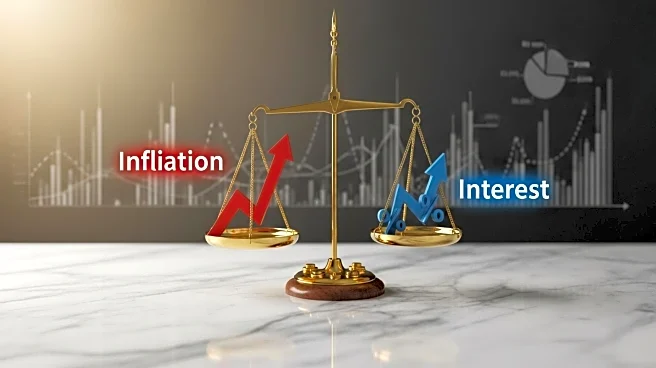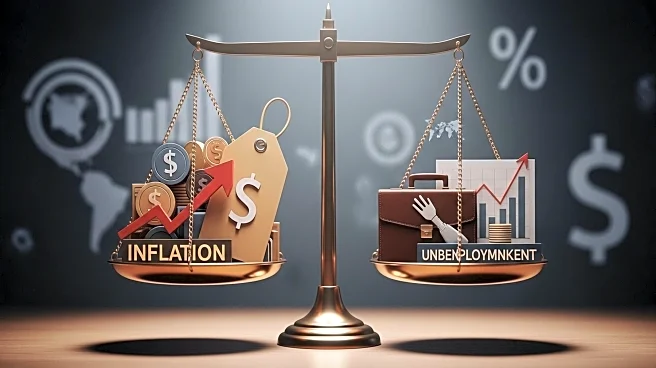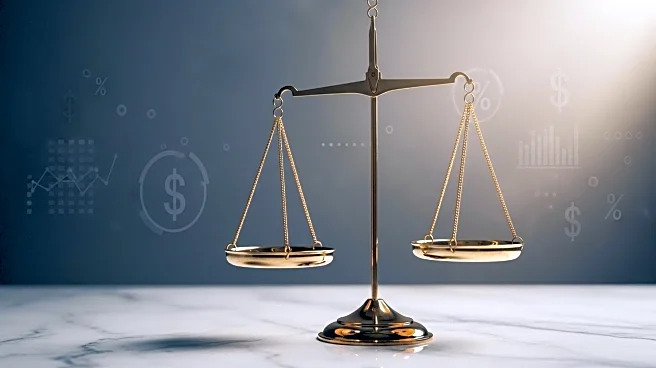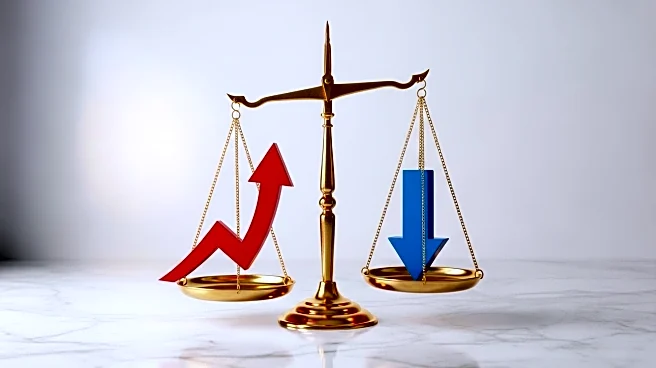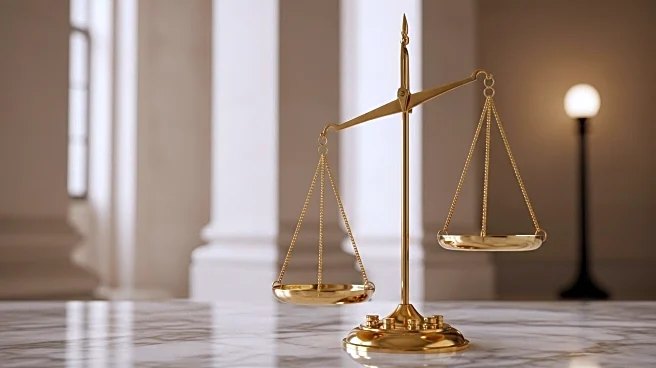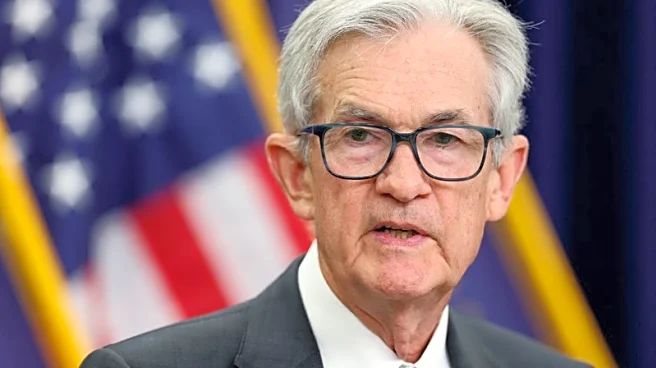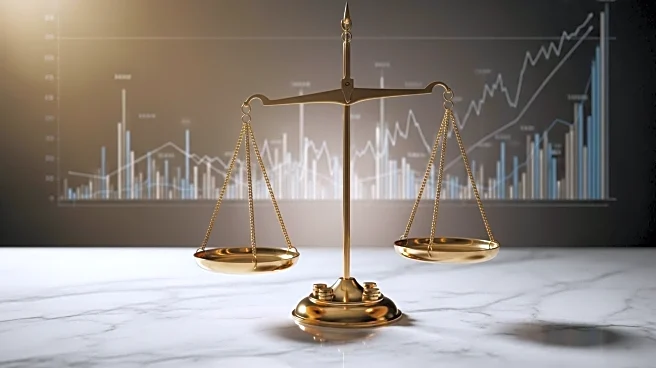What is the story about?
What's Happening?
Recent reports indicate that the U.S. economy is experiencing early-onset stagflation, characterized by slow economic growth coupled with rising prices. Consumer prices increased by 0.4% in August, pushing the annualized inflation rate to 2.9%, the highest since January. Concurrently, first-time unemployment claims surged to their highest level in four years, with 263,000 new applications filed in the week ending September 6. This combination of inflation and unemployment presents a complex scenario for the Federal Reserve, which traditionally uses interest rate adjustments to manage economic conditions. The Fed is under pressure from the White House, with President Trump's administration seeking more aggressive rate cuts to stimulate the economy.
Why It's Important?
The emergence of stagflation poses significant challenges for economic policymakers, particularly the Federal Reserve. Stagflation disrupts the typical economic balance, where slow growth usually leads to lower prices. The current situation complicates the Fed's ability to manage inflation and unemployment simultaneously, as lowering interest rates to boost employment could further increase inflation. This economic condition affects consumers, who face higher prices amid job insecurity, and complicates the Fed's policy decisions. The upcoming Fed meeting is crucial, as it will determine the central bank's approach to interest rates, impacting economic stability and potentially influencing political dynamics.
What's Next?
The Federal Reserve is expected to lower interest rates in its upcoming policy meeting, with the size of the cut being a key point of discussion. The appointment of Stephen Miran to the Fed's Board of Governors could influence the decision-making process, as he aligns with President Trump's call for more substantial rate cuts. The Fed's actions will be closely monitored, as they will have significant implications for the economy and political landscape. Stakeholders, including businesses and consumers, will be watching for signs of economic relief or further challenges.
Beyond the Headlines
The situation highlights the delicate balance the Federal Reserve must maintain between controlling inflation and supporting employment. The political pressure from the White House adds another layer of complexity, as economic decisions are intertwined with political agendas. The long-term implications of stagflation could lead to shifts in economic policy and influence future elections, as economic performance is a critical factor in political success.
AI Generated Content
Do you find this article useful?
